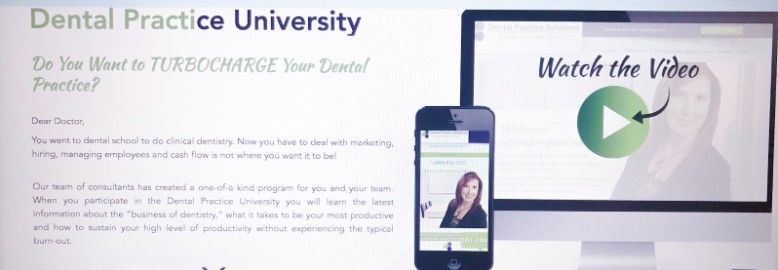Maximizing Dental Practice Productivity: Work Smarter, Not Harder With A Dental Coach.
February 18, 2024
In the ever-evolving landscape of dentistry, maintaining a high level of productivity is essential for the success of any dental practice. From managing patient appointments to optimizing workflow efficiency, the demands on dental professionals continue to grow. In such a dynamic environment, dental consultants play a pivotal role in helping practices navigate challenges and maximize productivity without necessarily working harder.
Understanding the Role of a Dental Coach – Consultant
A dental coach – consultant brings a wealth of knowledge and experience to your dental practice, offering strategic insights and actionable solutions tailored to the specific needs of each practice. Whether it’s streamlining administrative processes, enhancing patient experience, or improving team performance, or optimizing your dental hygiene department services and technologies, a dental coach-consultant acts as a trusted advisor, guiding dental practice owners to achieve their goals.
Optimize Workflow Efficiency
One of the primary ways a dental coach – consultant boosts productivity is by optimizing workflow efficiency. By conducting a comprehensive assessment of the practice’s operations, including scheduling protocols, scheduling strategies, hygiene department services, reactivating hygiene patients, and sequencing specific hygiene appointments for best reimbursement, and time management strategies, dental coaches – consultants identify areas for improvement and implement strategies to streamline processes for the best productivity.
For instance, implementing digital scheduling systems and appointment reminders can help reduce no-shows and last-minute cancellations, ensuring optimal utilization of valuable chair time. Moreover, an effective dental coach – consultant will gather data, create a strategic plan and then be able to monitor the effectiveness of the expectations during the coaching process.
Enhancing Patient Experience
In today’s competitive market, the patient experience plays a crucial role in attracting and retaining patients. Dental consultants understand the importance of delivering exceptional service at every touchpoint, from the initial inquiry to post-treatment follow-up. Dental coaches- consultants help dental practices create a welcoming and patient-centric environment.
This not only fosters patient loyalty but also generates positive word-of-mouth referrals, ultimately driving practice growth.
Empowering Team Performance
Behind every successful dental practice is a team of dedicated and motivated team members. A dental coach – consultant recognizes the importance of investing in team development and empowerment to drive productivity and morale. Through targeted training programs-workshops, and mentorship opportunities, coaches- consultants help team members enhance their skills, boost confidence, and foster a culture of continuous improvement.
By aligning team goals with practice objectives, coaches – consultants inspire collaboration and accountability, laying the foundation for dental practice productivity and sustained success.
Optimized Hygiene Patient Technology and Systems
An optimized hygiene department with strategic systems allows for improved patient care, higher patient satisfaction with hygienists who enjoy their day treating patients and take pride in being a dental professional.
Dental coaches – consultants leverage their expertise to develop tailored strategies and systems that resonate with the vision of the dental practice owner-doctor and the entire team; specifically dental hygienists.
Happy team members, happy dental practice owners, yield happy patients. Happy patients create more. new patient referrals.
Conclusion
In conclusion, a dental coach-consultant serves as a catalyst for productivity and growth within dental practices, offering strategic guidance and innovative solutions to overcome challenges and seize opportunities.
By optimizing workflow efficiency, enhancing the patient experience, empowering team performance, and implementing effective systems and up-to-date technology, dental coaches-consultants help practices thrive in an increasingly competitive landscape.
In essence, working smarter, not harder, is the mantra of the modern dental consultant, as they empower practices to achieve their full potential and deliver exceptional care to their patients. By embracing the insights and recommendations of a dental consultant, practices can position themselves for long-term success and make a lasting impact in the communities they serve.
Check out our workshops and how you can more easily streamline your dental hygiene department and enjoy your day as a dental professional with harmony.
Book a quick call and discover how to STOP working so hard!










